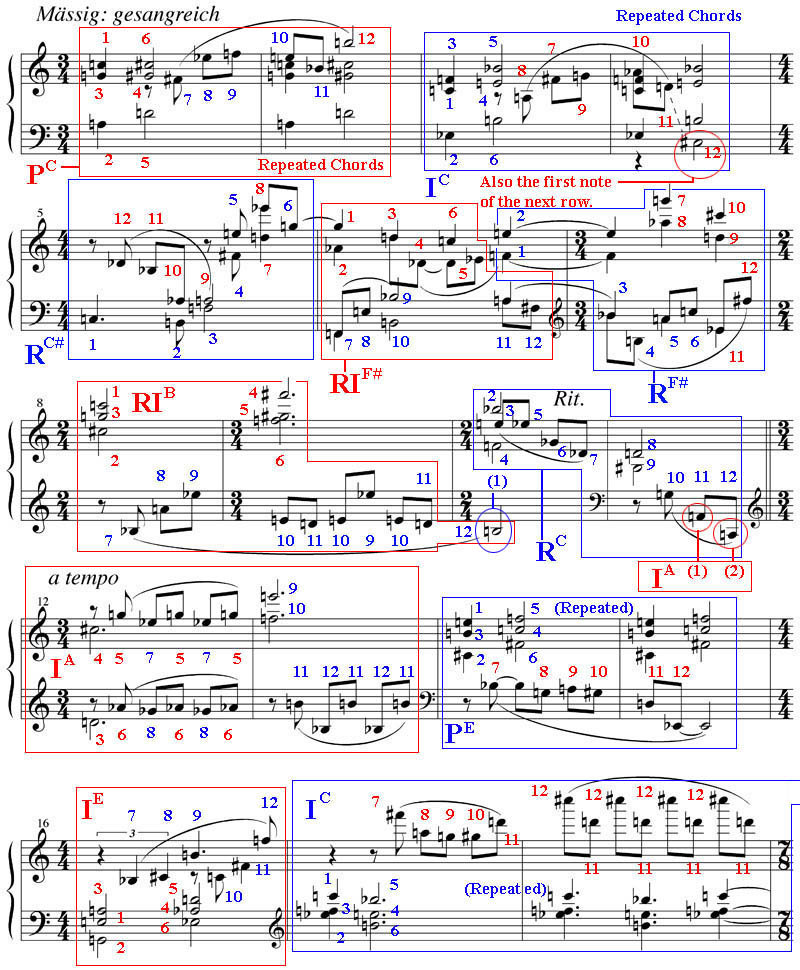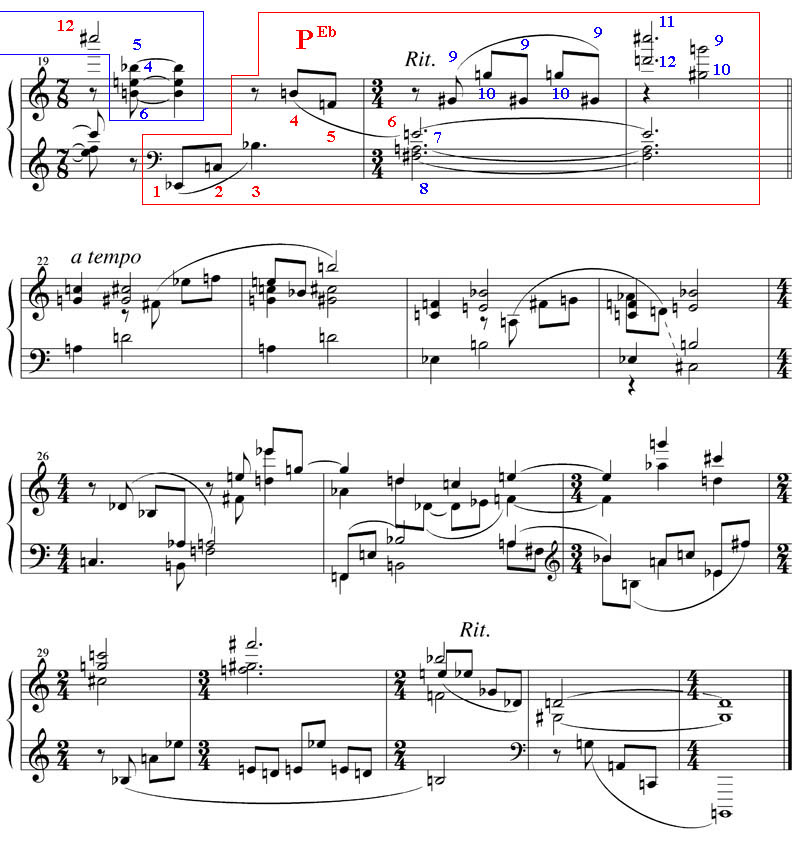1. Composing with a 12-Tone Row. Although some composers have developed extremely complex methods of using a matrix, two fundamental methods will be explored in depth here. Theorists have adopted certain cartography terminology, such as 'topography', perhaps because deciphering the contoured layout of a 12-tone composition can be akin to finding one's way about an unfamiliar landscape by using a standard map. There are two essential types of topography: block and polyphonic.
Block topography involves all musical materials being derived from one row at a time, regardless of the number of voices or whether the music is homophonic or contrapuntal. Polyphonic topography, on the other hand, allows each voice (or voice groups) to develop from individual row transformations. Some compositions apply only one topography type, while others combine both approaches. In our sample pieces, we will explore primarily one over the other (per work) without creating too many self-imposed limitations.
Regarding analysis, rows will be labeled based on their transformation type [P (prime), I (inversion), R (retrograde), RI (retrograde-inversion)] and transposition. Transpositions are named based on the first pitch of the row if the row form is prime or inversion. Retrogrades and retrograde-inversions are labeled in terms of the prime and inversion rows from they are derived. Arabic numbers (1-12) are used to indicate what pitch in a specific transformation is being articulated.
2. Lyric Composition. This piece will employ mostly block topography in a ternary form structure. The slurs are used to clearly highlight the melodic voice as it weaves its way through the texture. Although block topography can be used in a strictly chronological progression through each series (applying pitches 1 to 12 in order), we can also articulate each hexachord in tandem (especially since the particular row at hand was constructed from a hexachordal perspective). As well, reiterated patterns within the course of the series allow for some repetition. This is exploited both in the opening section repeated chords and the brief ostinati that characterize the central section.
We begin with our initially conceived row at the outset of the composition, but henceforth allow for some freedom regarding what row to employ. However, our choices are not simply capricious ones: shared tones are an interesting and seamless method of 'modulating' from one row to the next (for example, the final two pitches in bar 11, A and C, are the first two pitches of the next transformation). In bar 5 we will note that although only one row is used, it is employed simultaneously in its prime and retrograde forms, thus lying somewhere between block and polyphonic topographies.
Also note that a slight alteration to the precise order are made in bar 3: here the melodic contour made better sense to have the F# after the A rather than before. Schönberg himself admitted to making these kinds of alterations when the expressive needs of the music required them. Once again, the student will observe that structures and systems provide a means with which to establish a working method, but should never inhibit the composer's creativity or aesthetic choices.
The second section functions more like the development from a sonata than the contrasting central part of a ternary form. Here we chose specific materials and ideas from the opening to be explored further: the quasi-ostinato from bars 8-9 becomes a leading concept in the course of the development, while the use of a repeated chord progression (from bars 1-4) is also integrated freely in this segment.
It is important to note that dissonance, in the tonal sense, does not function in this style. In fact, certain intervals such as the major seventh and the tritone, which in the Common Practice needed some kind of resolution, here are primary characteristics of the vocabulary. Without a tonal hierarchy, pitches are defined in 12-tone composition only through their relationship to one another. As such, those with less compatible overtone series bring their contrasting profiles into greater relief and thus focus the sonority more acutely, whereas in Common Practice composition, pitches with more compatible overtone series reinforced the fundamental of a given tonal structure.
Open the matrix in a new window.
mp3 download
Continue for a contrasting composition applying selected dodecaphonic techniques.




